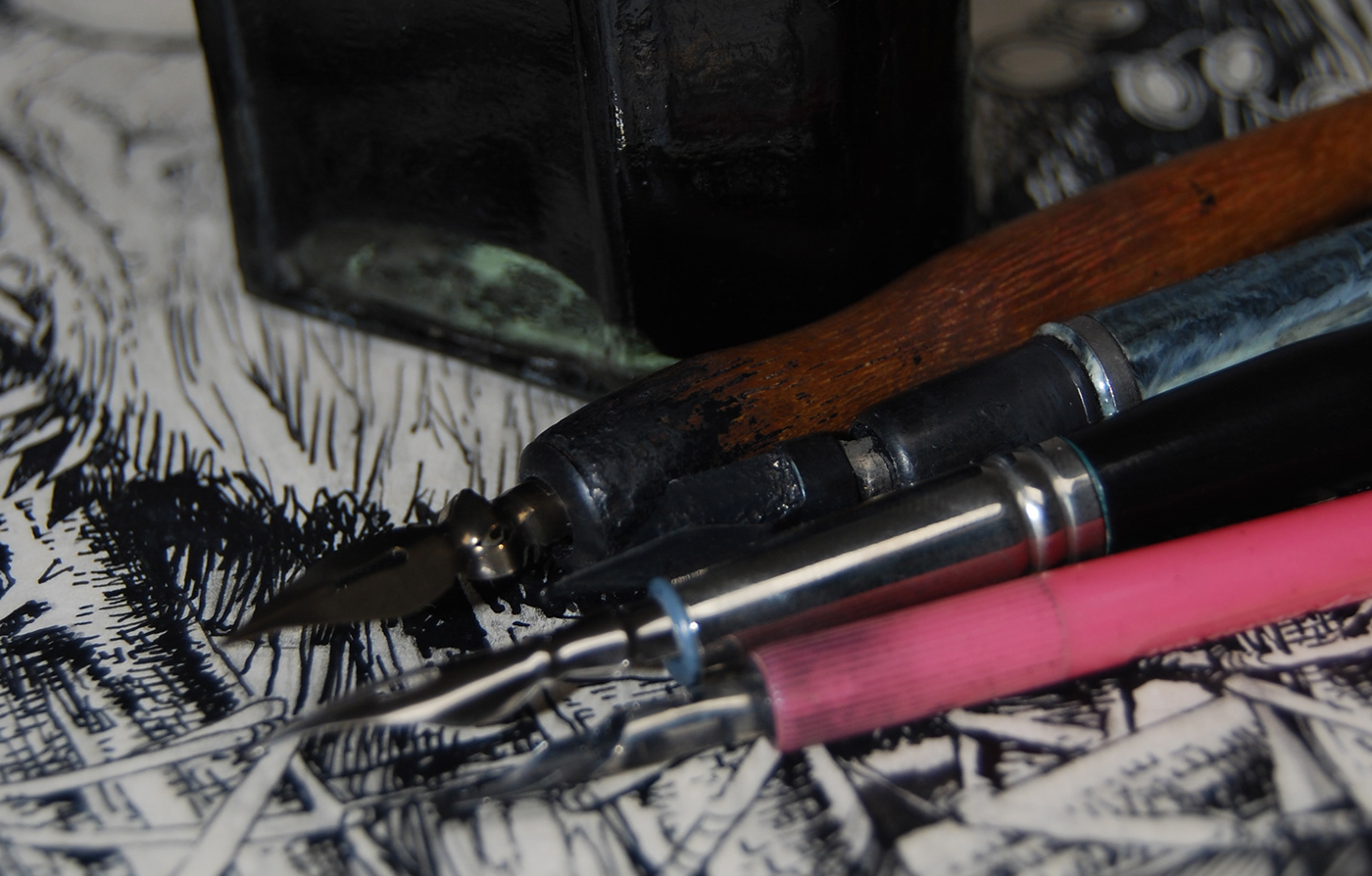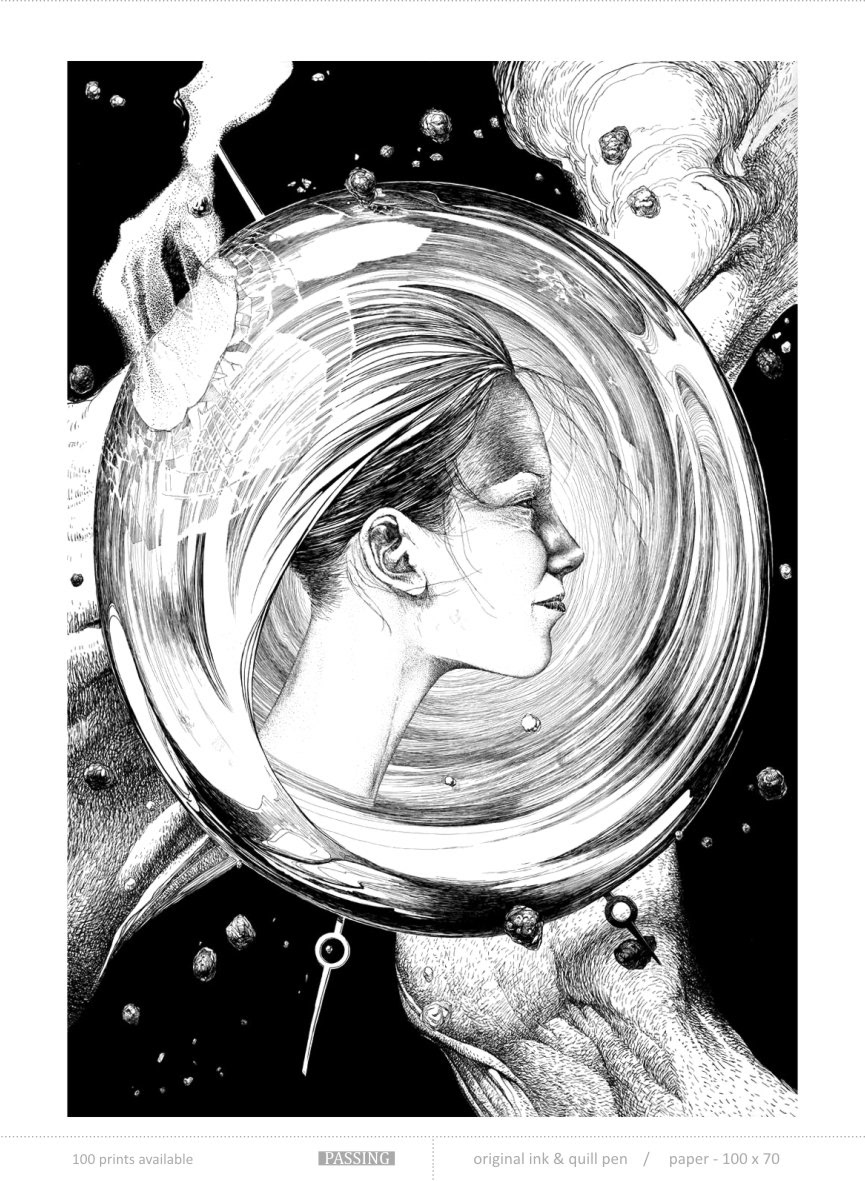






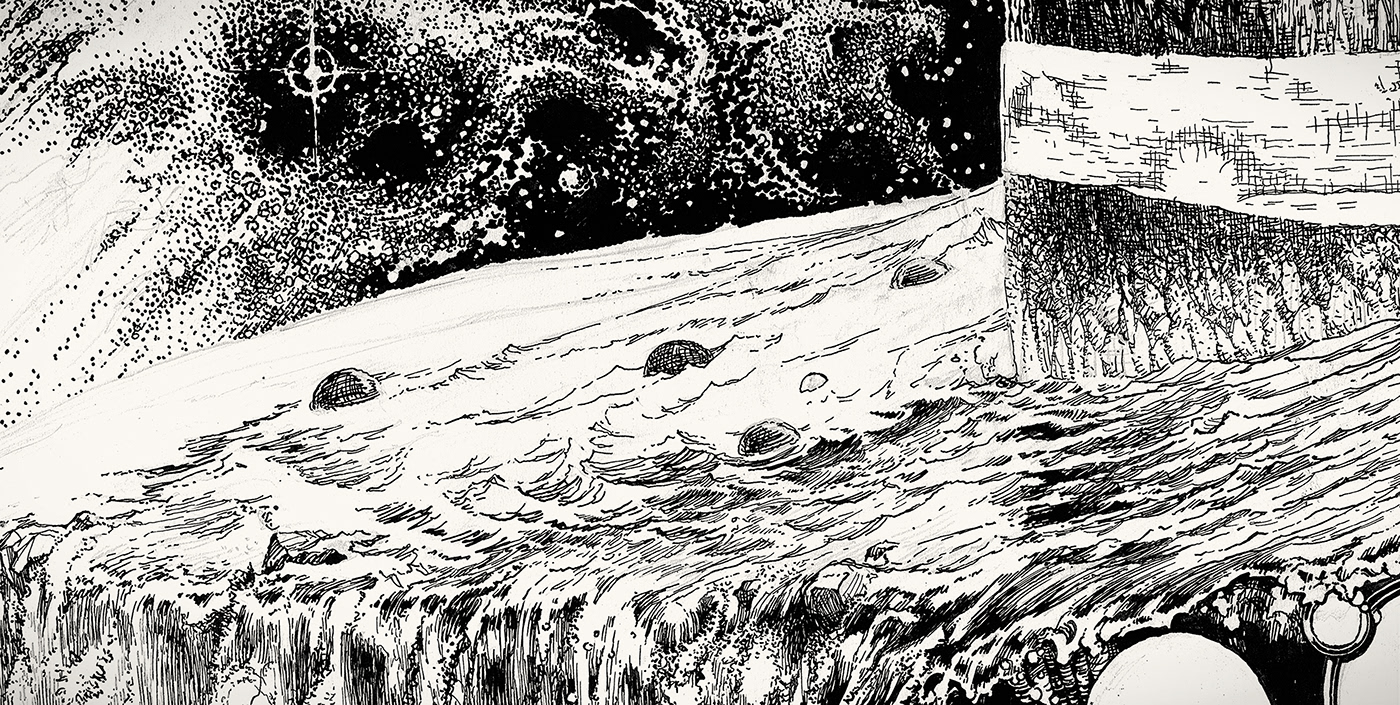






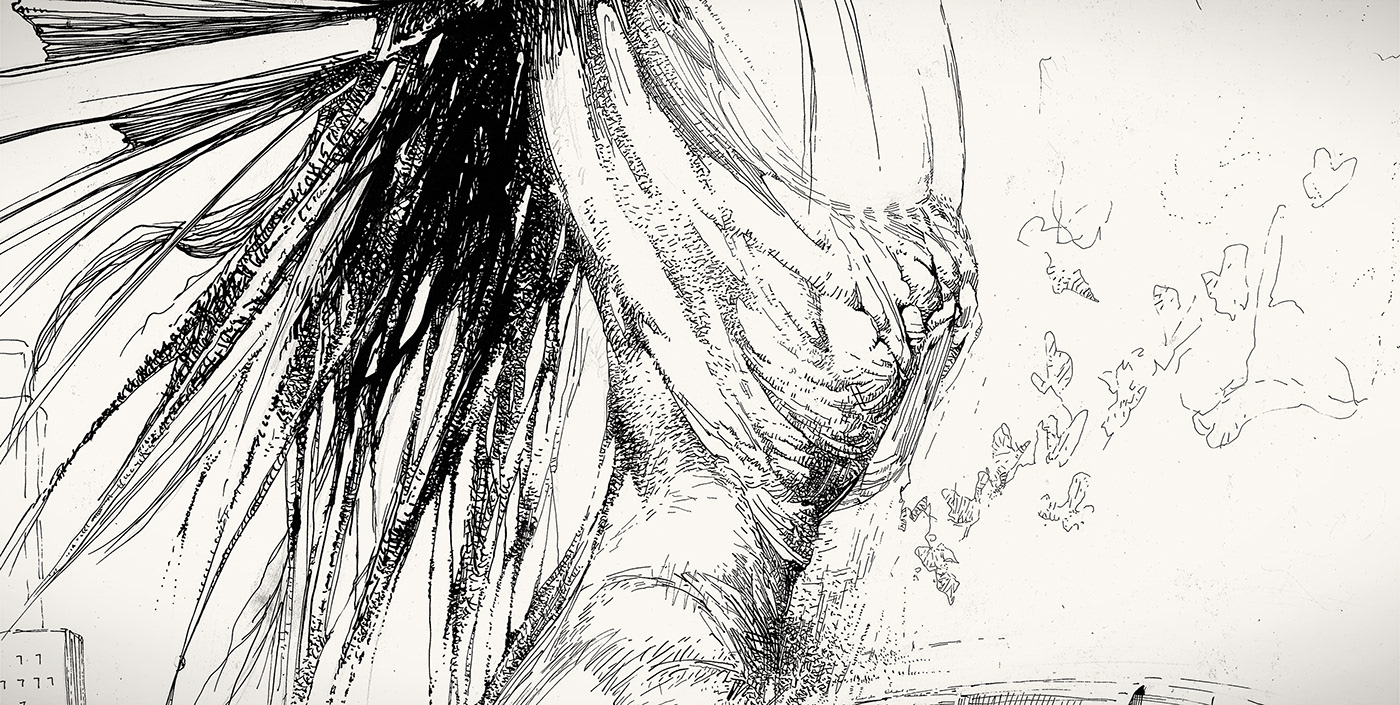




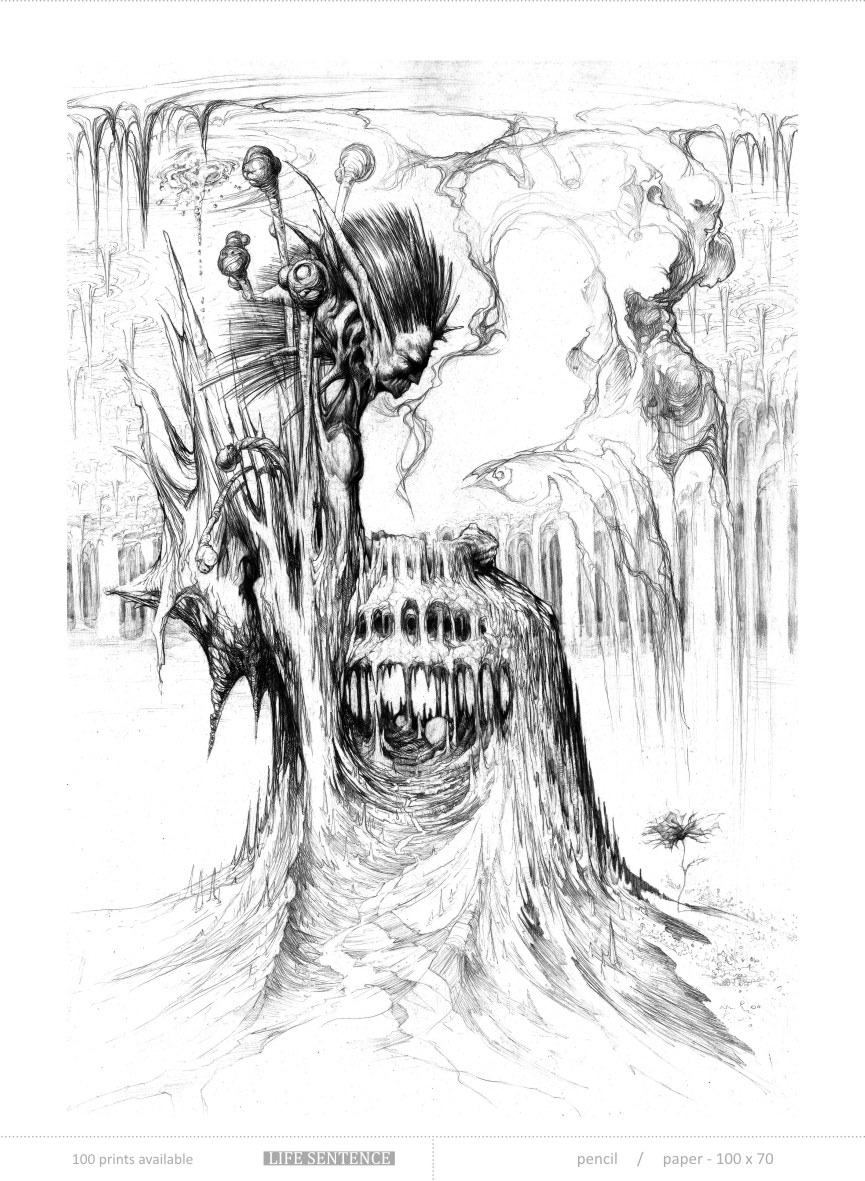
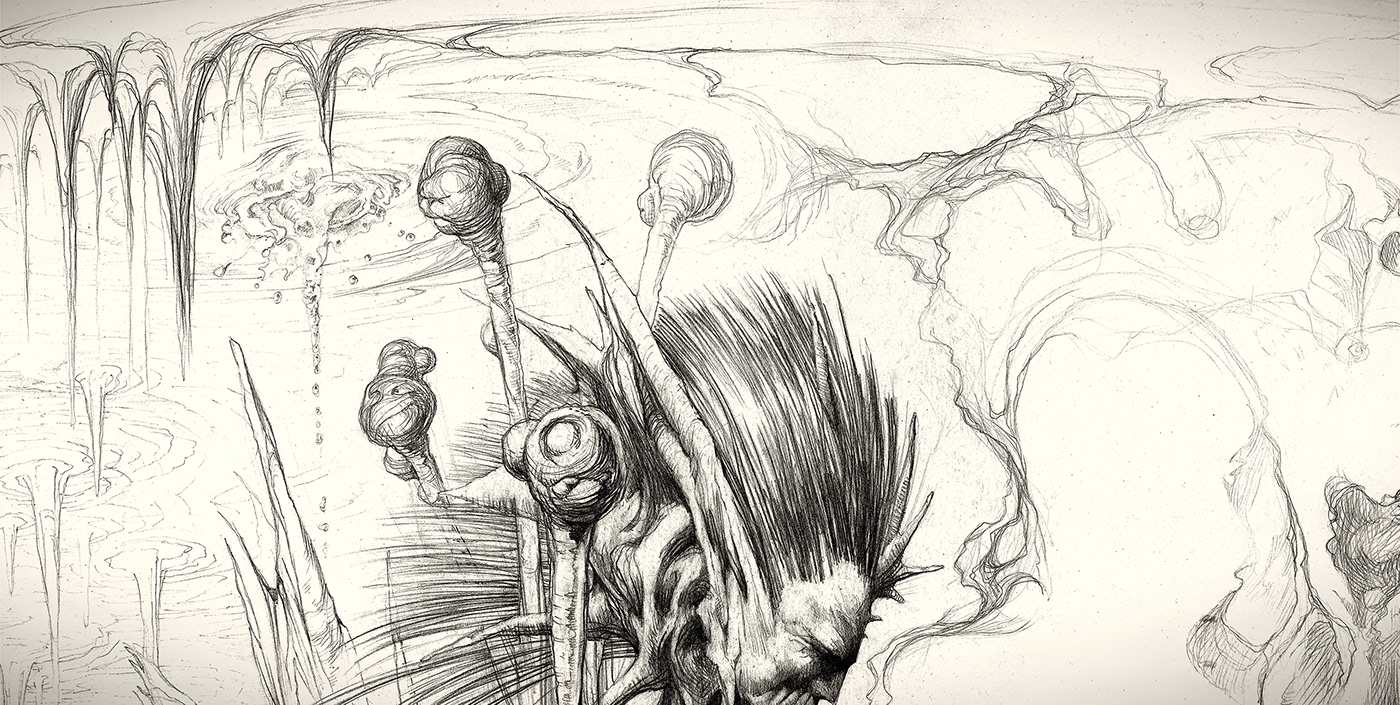
A dip pen or nib pen usually consists of a metal nib with capillary channels like those of fountain pen nibs, mounted on a handle or holder, often made of wood. Other materials can be used for the holder, including bone, metal and plastic, while some pens are made entirely of glass. Generally speaking, dip pens have no ink reservoir; therefore the user has to recharge the ink from an ink bowl or bottle in order to continue drawing or writing. (However, there are simple, tiny tubular reservoirs that illustrators sometimes clip onto dip pens; these allow drawing for several minutes without recharging the nib.) Recharging can be done by dipping into an inkwell; however, some illustrators and cartoonists (who are the main current users of such pens) are more likely to charge the pen with an eyedropper or a syringe, which gives them more control over the amount of ink applied. Thus, "dip pens" are not necessarily dipped. Many illustrators call them "nib pens."
The dip pen has certain advantages over a fountain pen. It can use waterproof pigmented (particle-and-binder-based) inks, such as so-called "India ink", drawing ink, or acrylic inks, which would destroy a fountain pen by clogging it up, as well as the traditional iron gall ink, which can cause corrosion in fountain pens.
There is also a wide range of readily exchangeable nibs available so different types of lines and effects can be created. The nibs and handles are far cheaper than most fountain pens, and allow color changes much more easily.
Dip pens were generally used prior to the development of fountain pens, and are now mainly used in illustration, calligraphy, and comics.
Source: Wikipedia, the free encyclopedia
